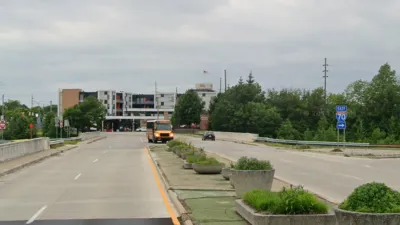In his "Dream City" column, Will Doig looks at the attributes making tactical urbanism the hot revitalization trend for municipal authorities across the country.
Although long associated with bottom-up and unsanctioned efforts to alter the urban environment, a confluence of factors have officials across the country incorporating the practices of tactical urbanism -- "that low-cost, low-commitment, incremental approach to city building" -- into their arsenal of improvement and revitalization tools.
As Doig notes, "In a way, thinking small is the next logical step in America's urban renaissance. When cities really started changing 10 or 15 years ago, the economy was booming and the Internet was a newfangled gizmo. Today, cities have less money but more ways to communicate, two conditions perfectly suited to more focused, low-cost planning. Now you can home in on a specific neighborhood (or even just a few blocks), find out what the residents there want or need, cheaply implement it on a trial basis, and make it permanent if it works."
One reason for the popularity of these nimble projects is their focus on function and program, rather than simply designing an attractive (and expensive) place and hoping that people will use it.
According to Ethan Kent, vice president of the nonprofit Project for Public Spaces (PPS), "The ‘Lighter Quicker Cheaper' method gets people focused on the uses. Typically people can't see how they can change the public realm because they feel like they're depending on big capital projects."
"But when city governments become tactical urbanists," says Doig, "it combines the best of both worlds: a space provided and sanctioned by the city, but one that the community can remake in its own image."
FULL STORY: Stop thinking big

Trump Administration Could Effectively End Housing Voucher Program
Federal officials are eyeing major cuts to the Section 8 program that helps millions of low-income households pay rent.

Planetizen Federal Action Tracker
A weekly monitor of how Trump’s orders and actions are impacting planners and planning in America.

Ken Jennings Launches Transit Web Series
The Jeopardy champ wants you to ride public transit.

Washington Legislature Passes Rent Increase Cap
A bill that caps rent increases at 7 percent plus inflation is headed to the governor’s desk.

From Planning to Action: How LA County Is Rethinking Climate Resilience
Chief Sustainability Officer Rita Kampalath outlines the County’s shift from planning to implementation in its climate resilience efforts, emphasizing cross-departmental coordination, updated recovery strategies, and the need for flexible funding.

New Mexico Aging Department Commits to Helping Seniors Age ‘In Place’ and ‘Autonomously’ in New Draft Plan
As New Mexico’s population of seniors continues to grow, the state’s aging department is proposing expanded initiatives to help seniors maintain their autonomy while also supporting family caregivers.
Urban Design for Planners 1: Software Tools
This six-course series explores essential urban design concepts using open source software and equips planners with the tools they need to participate fully in the urban design process.
Planning for Universal Design
Learn the tools for implementing Universal Design in planning regulations.
Heyer Gruel & Associates PA
Ada County Highway District
Institute for Housing and Urban Development Studies (IHS)
City of Grandview
Harvard GSD Executive Education
Toledo-Lucas County Plan Commissions
Salt Lake City
NYU Wagner Graduate School of Public Service




























